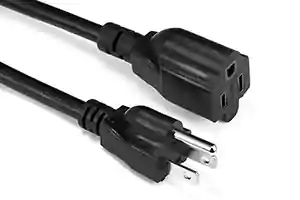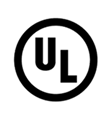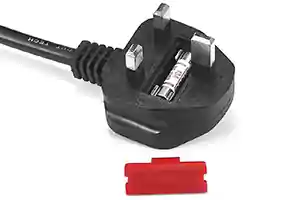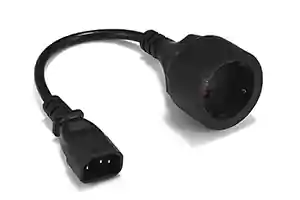Теперь твоя очередь
So that’s how I understand What are the appliance power cord types。
Теперь я хочу передать это вам: Через мою статью, you understand how to choose and what are the standards?
Do you have a different point of view with the electrical outlet? Или любые другие вопросы?
Дайте мне знать, оставив быстрый комментарий ниже прямо сейчас.
Appliance power cord types power plugs can generally be divided into 2-pole power plugs, 3-pole power plugs, and multi-core power plugs.
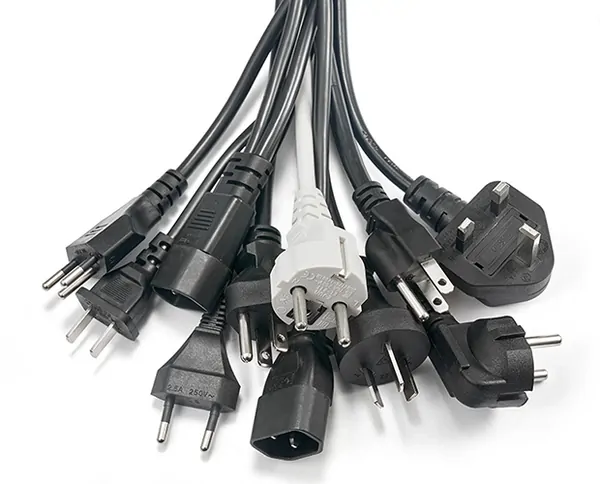
Оглавление
- 1 2 core appliance power cord types power plugs.
- 2 3-pole appliance power cord types power plugs.
- 3 Multi-core appliance power cord types power plugs.
- 4 A-type appliance power cord types (used in the northern and central United States and Japan)
- 5 Type B appliance power cord types (used in the northern and central United States and Japan)
- 6 Type C appliance power cord types (used in all European countries except the United Kingdom, Ирландия, Кипр, и Мальта)
- 7 Type D appliance power cord types (almost exclusively for India, Шри-Ланка, Непал, and Namibia)
- 8 Type E appliance power cord types (originally used in France, ГБ1002 2,5 А, Польша, Словакия, Чешская Республика, Тунис, and Morocco)
- 9 F-type appliance power cord types (for Germany, Австрия, Нидерланды, Швеция, ГБ1002 2,5 А, ГБ1002 2,5 А, Португалия, Испания, и Восточная Европа)
- 10 G-type appliance power cord types (used in the United Kingdom, Ирландия, Кипр, Мальта, Малайзия, and Singapore)
- 11 H-type appliance power cord types (Israel-specific)
- 12 Type I appliance power cord types (mainly used in Australia, New Zealand and Papua New Guinea)
- 13 J-type appliance power cord types (almost exclusively for Switzerland and Liechtenstein)
- 14 K-type appliance power cord types (almost exclusively for Denmark and Greenland)
- 15 L-type appliance power cord types (almost exclusively Italian and occasionally seen in North Africa)
- 16 M-type appliance power cord types (almost exclusively for South Africa, Свазиленд, и Лесото)
2 core appliance power cord types power plugs.
2 core power plug as the name implies is the plug has two inserts or two pins, the specific inserts or pins, each country’s standards are not the same, например, China’s is two inserts, Europe’s is two round pins.
3-pole appliance power cord types power plugs.
3-pole power plug, as the name implies, is a plug that has three pins or three pins or two pins or two pins plus a grounding hole. Such a structure is more complex than the 2 core power plug; the size of the pins and the diameter of what the standard has great requirements, the length and the distance between the pins are factors to consider.
Multi-core appliance power cord types power plugs.
This multi-core power plug is more complex, what 4 core power plug, 5 core power plug, and so on, according to the customer’s requirements, use in which specific equipment are to be considered according to the reality.
Power outlets are mainly divided into mobile power outlets, intelligent power outlets, functional power outlets, industrial power outlets, embedded wall power outlets, cabinet power outlets, desktop power outlets, power group power outlets, и т.п., according to the different structures and uses. Probably it is the Type.
A-type appliance power cord types (used in the northern and central United States and Japan)
Type II electrical plugs with two ungrounded pins are used in the northern and central parts of the United States and Japan. On the surface, it seems that the Japanese plugs and sockets and the same standard. Шнуры питания изготовлены в соответствии со стандартами NEMA и IEC., the Japanese system is more compact, marked differently, and tested and approved by MITI or JIS mandatory. Шнуры питания изготовлены в соответствии со стандартами NEMA и IEC., the power cord size and current level are different from those in other parts of the world.
Type B appliance power cord types (used in the northern and central United States and Japan)
This plug for Class I appliances has two parallel tabs and a grounding terminal (American Standard NEMA5-15/Canadian Standard CS22.2, n°42). Rated at 15A, although this plug is also a Japanese standard plug, it is rarely used in the northern United States. Поэтому, most products sold to Japan use Type II ungrounded plugs. Like the Type, A standard, Japan’s Type B plugs and sockets are also slightly different from those in the United States.
North America NEMA5-15 ungrounded plugs are usually used in the central and southern parts of the United States. Поэтому, many users are usually cut off the grounded end to plug into a two-pole ungrounded outlet.
Type C appliance power cord types (used in all European countries except the United Kingdom, Ирландия, Кипр, и Мальта)
This Type of plug is not grounded and has two rounded feet. It is described in CEE7/16 and is very common. It is probably the most widely used of the international plugs. It can be matched to all sockets with a 19 mm spacing and a hole diameter of 4.0-4.8 мм. It is commonly used in European countries, with the exception of the United Kingdom and Ireland. It is also used in many parts of the developing world. This plug is limited to Class II appliances with a current of 2.5 or less and is, конечно, non-polarized.
Type D appliance power cord types (almost exclusively for India, Шри-Ланка, Непал, and Namibia)
The Indian standard plug was originally defined in British Standard 546 (the British Standard before 1962). Although Type D is almost exclusively used in India, Шри-Ланка, Непал, and Namibia, it is sometimes seen in special locations such as hotels and theatres in the UK. These plugs have three large round pins, triangular in shape, and are rated at 5A. There are also large round plugs of type M rated at 15A, which are placed next to type D for large appliances in India, Шри-Ланка, and Namibia. Some sockets are compatible with both Type M and Type D plugs.
Type E appliance power cord types (originally used in France, ГБ1002 2,5 А, Польша, Словакия, Чешская Республика, Тунис, and Morocco)
The standard sockets in France, ГБ1002 2,5 А, and other countries are not the same as the CEE7/4 standard sockets (Тип F) in Germany and other continental European countries. The reason for this is that the round grounded male terminal of the E-type socket is permanently connected. The plug itself is similar to Type C, except that a female terminal is added to connect the ground terminal on the socket. In order to solve the differences between the E and F type sockets, the CEE7/7 plug appeared: it has a grounding clip on both sides to match the F type socket and a female terminal to allow the grounding terminal of the E type socket to be inserted. The E plug without the grounding clip, although still seen in some very old products, is no longer used. CEE7/7 plugs are polarized for use in E-type receptacles. Поэтому, the product should be permanently connected to the power supply or connected by a high power connector, such as the IEC 309 система.
F-type appliance power cord types (for Germany, Австрия, Нидерланды, Швеция, ГБ1002 2,5 А, ГБ1002 2,5 А, Португалия, Испания, и Восточная Европа)
The CEE7/4 Type F plug is often referred to as the «вилка Шуко» and is similar to type C except that it is round and has two additional grounding clips on both sides of the plug. Because the CEE7/4 plug can be inserted into the socket in two directions, the Schuko plug is non-polarized (that is, the fire and zero wires are connected at random). Поэтому, the product should be permanently connected to the power supply or connected by a high power connector, such as the IEC 309 система. In order to solve the differences between E and F-type sockets, the CEE7/7 plug appears: as shown above, it has grounding clips on both sides to match the F-type socket and a female terminal to allow the grounding end of the E-type socket to be inserted. The F-type plugs without female terminals can still be found in DIY stores, but only for rewiring.
The standard plugs and sockets used in the USSR are defined in the Russian Standard Industrial Product Specification 7396, which is similar to the Schuko standard. The spacing between the two pins is 19 мм, but the diameter is 4.0 мм, which is different from the continental European standard of 4.8 мм. It is possible to use Russian plugs to match Schuko sockets, but Russian sockets do not allow the connection of E and F plugs because the diameter of the socket hole is smaller than the plug. Many official Eastern European standards are already practically equivalent to the Schuko standard. And Germany offered to re-unify the DIN and VDE draft if no exceptions were adopted. Former East Germany must recognize the Schuko standard. So it seems that only most but not all Eastern European countries use the Schuko standard, and until recently, their exports to the Soviet Union were fitted with the Soviet standard plugs. Because of the very large volume of products exported to the USSR, the Soviet plugs were only seen in Eastern Europe.
G-type appliance power cord types (used in the United Kingdom, Ирландия, Кипр, Мальта, Малайзия, and Singapore)
These plugs have three pins (two flat and one rectangular) in a triangular shape. British Standard BS1363 requires that a three-wire grounded and fused plug be used for all power supplies (including two-wire Class II appliances). British electrical outlets in the fire and zero contact hole installed a protective cover to prevent foreign objects from entering.
The UK domestic system uses a ring power supply with a fuse in the plug; a cartridge-shaped fuse with a current of 3A is usually used for small appliances, such as radios, and a current of 13A is usually used for large products such as hair dryers. Ring power supplies are rated at a few hundred amps. Almost everywhere else in the world is the use of an excitation power system. In this system, the wall socket, or group of sockets, has a fuse on the mains, whether or not there is a plug. Поэтому, if you are quietly using an exotic product in the UK, you will need an adapter with the correct fuse. Most of the 13A used too large for computers. ГБ1002 2,5 А, published in 1962, gradually replaced the earlier standard plugs and sockets (Разрешения и сертификаты агентства KEMA доступны на странице спецификации продукта.) (Подобные стандарты с одинаковыми номерами, но разными префиксами иногда называют «гармонизированными стандартами».).
H-type appliance power cord types (Israel-specific)
This plug is defined in SI 32 for Israel. It has two flat pins, the same as type B plugs, but in a V-shape instead of parallel as type B plugs. The non-grounded leg is widened in the middle so that the C-type plug can be inserted.
Type I appliance power cord types (mainly used in Australia, New Zealand and Papua New Guinea)
These plugs also have a grounded end and two V-shaped feet. There are also non-grounded plugs with only two V-shaped pins. Although they look very similar to the plugs used in Israel (type H), they are not compatible. The Australian standard plug/socket series is described in SAA document AS3112, and the current is 10A. Despite the slight difference, the Australian plug can be matched with the socket of the People’s Republic of China (mainland China).
J-type appliance power cord types (almost exclusively for Switzerland and Liechtenstein)
Switzerland’s own standard is described in SEC1011. This plug is similar to type C, except that it has an additional grounding terminal. This connection system is rated for 10 Подобные стандарты с одинаковыми номерами, но разными префиксами иногда называют «гармонизированными стандартами».. Выше 10 Подобные стандарты с одинаковыми номерами, но разными префиксами иногда называют «гармонизированными стандартами».; the product should be permanently connected to the power system by suitable circuit-only protection or to the power supply by a suitable high-power industrial connector.
K-type appliance power cord types (almost exclusively for Denmark and Greenland)
The Danish standard is described in Afsnit 107-2-D1. The plug is similar to type F, except that it has a grounding terminal instead of a grounding clip. Danish sockets can be matched with both CEE7/4 and CEE7/7 plugs; Однако, neither of these plugs can be grounded because there is no male ground terminal on the plug. The correct plug should be used in Denmark as long as it is safe to do so. The plug variation is only used for the introduction of surge protection in calculator circuits. The plugs are rated at 10A.
L-type appliance power cord types (almost exclusively Italian and occasionally seen in North Africa)
The Italian standard for grounded plugs/sockets, CEI23-16/VII, includes two types, rated at 10A and 16A, and with different diameters and spacings. These plugs are similar to type C, except that they have a grounding through the middle grounding terminal. Because they can be plugged into the socket in two ways, they are non-polarized.
M-type appliance power cord types (almost exclusively for South Africa, Свазиленд, и Лесото)
This type of plug is similar to the Indian D-type plug, but it has a larger foot. There are some sockets where both M-type and D-type plugs are suitable.
Have you learned the appliance power cord types?
DCpowercord — профессиональный производители шнуров питания. Наши инженеры ответят, если у вас возникнут вопросы по шнурам питания.. Пожалуйста, свяжитесь с нами напрямую!
